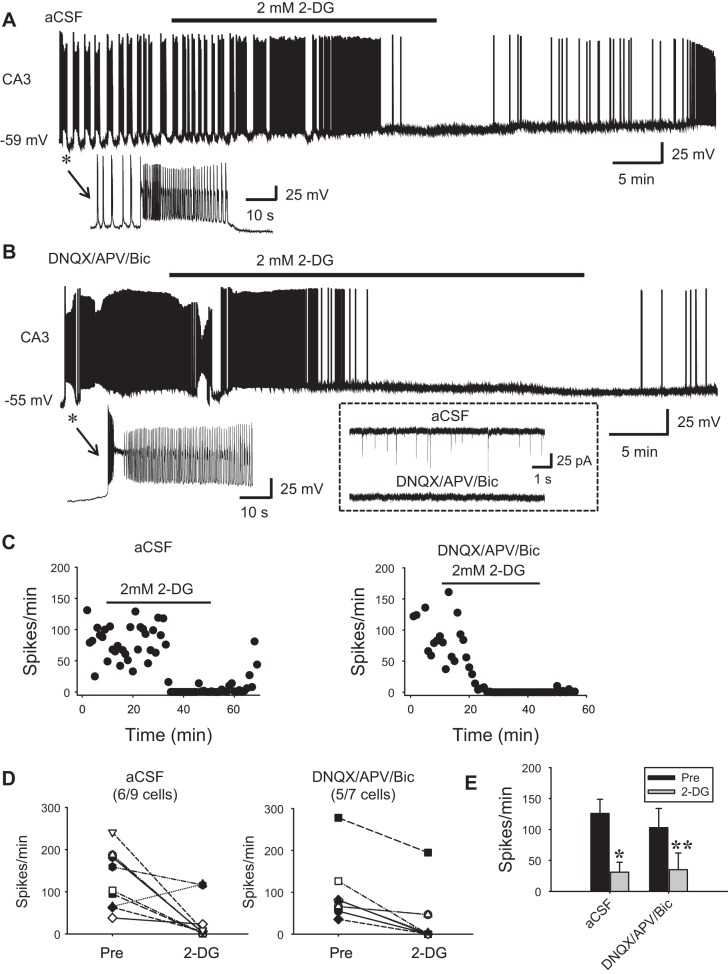Fig. 3.
Glycolytic inhibition abolishes spontaneous firing of the hippocampal CA3 neurons. A and B: whole cell recordings showing robust spontaneous firing of CA3 pyramidal neurons in aCSF (A) or in the presence of synaptic transmission blockers DNQX, APV, and bicuculline (B). The asterisks in A and B mark the initial sections of the recordings, which are expanded (bottom) to show the firing patterns of the 2 neurons. Inset in dash-lined box in B shows that DNQX/APV/Bic completely abolished spontaneous excitatory synaptic currents. Under both conditions, neuronal firing was effectively abolished by bath application of 2 mM 2-DG, which recovered partially during washout. C: time course of the recordings in A (left) and B (right) showing the changes in firing rate during 2-DG bath application (horizontal lines). D: summary data showing the effect of 2-DG on the individual neurons in the 2 conditions. Note that 2-DG completely blocked spontaneous firing in 6 of 9 and 5 of 7 neurons for the 2 groups, respectively. E: averaged firing rate showing the effect of 2-DG in the 2 groups. *P < 0.05; **P < 0.01, 2-tailed paired t-test.

